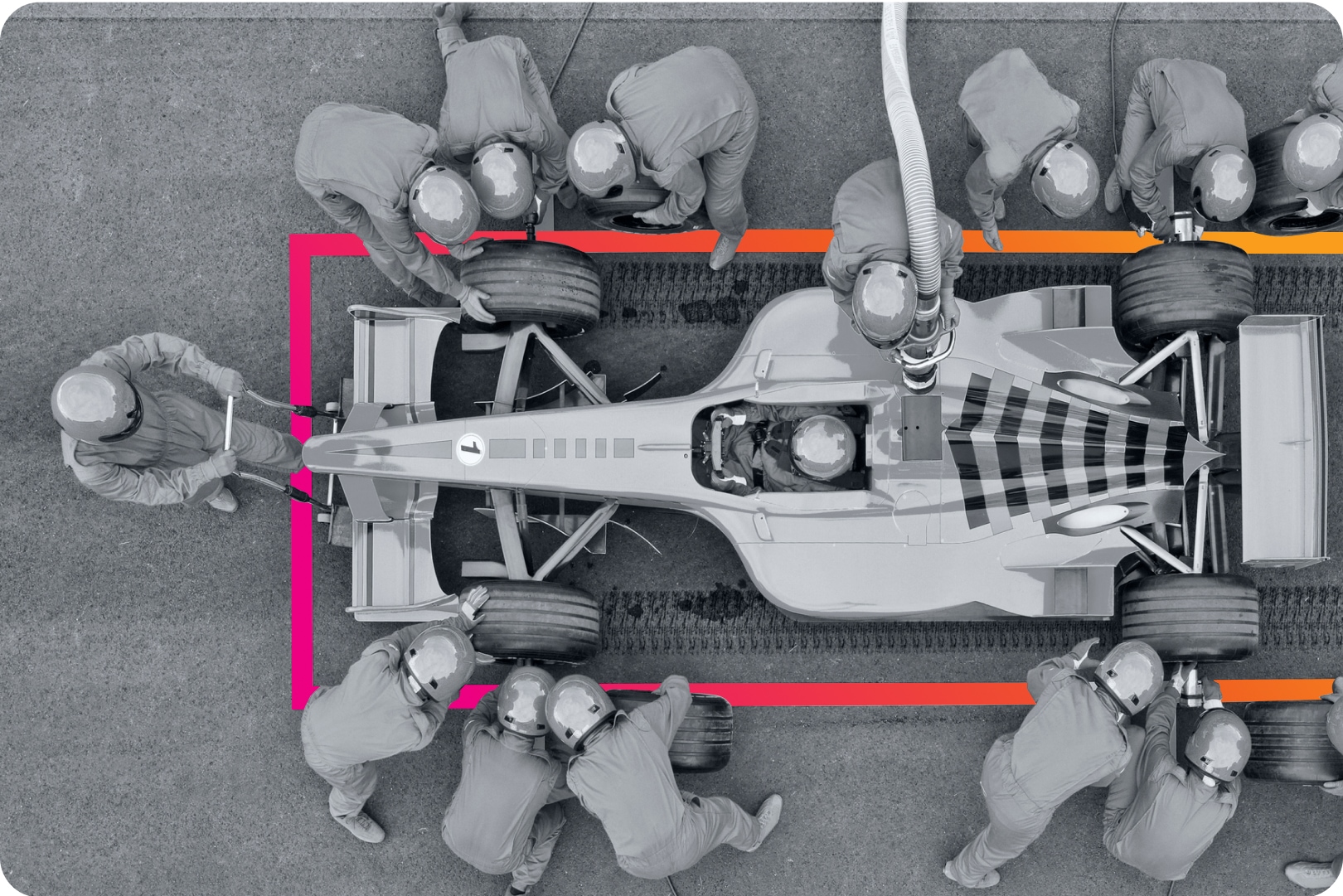Third over the line: users
Drivers trust their pit crew, but as a user, they are the only one who can tell the engineering team “how it feels” in the car, drawing on their years of experience. They are the one pushing the car to its limits, and they are accountable. It’s the driver who ends up on the podium (or doesn’t), so the driver has the final say. Let me say that again, because it’s pretty surprising — even if the crew is asking the driver to stop, giving advice and data to take a particular action, it’s still the driver’s call on what to do, and the pit crew has to adapt and respond.
When will the P(IT) crew analogy begin?
Here it is! IT teams and leaders can learn a lot from the way pit crews run. Can you imagine:
- A bigger shared purpose than just your local focus?
- Everyone in your team loves regulatory constraints, because it’s a catalyst to innovate?
- Different and deliberate periodicities of feedback, because it aids understanding, optimises readiness for intervention, and informs changes and improvements?
- Users having the final say? And it’s periodically checked that user needs are being met (weekly, ongoing, or at the end of the season financial year.)
- Your team wearing matching outfits?
OK, maybe not that last one. But the other four are valid! Let me explain.
1. A bigger shared purpose
The pit crew isn’t just about tyres, and your team isn’t just about technology. Giving your team permission to think bigger means better outcomes for the business and a more motivated team, with an understanding and ability to communicate how they contribute to the wider success of the business. Any win is their win too, and knowing your team’s business links will help you in the boardroom too.
2. Regulatory constraints
Imagine if you, as a leader, see regulation as a chance to innovate, to differentiate, rather than as a horrendous burden. Your team loves the fact they have guidelines to work with and targets to meet. Your compliance team works closely with your engineering teams and analysts to give you a competitive edge and achieve your shared purpose.
Never waste a good piece of regulation. European technical leaders like you have got plenty of options — with DORA, NIS2 and the UK’s Telecommunications Security Act all coming your way. Reach out to your compliance teams, to understand and work with, rather than against, the changes on the horizon.






